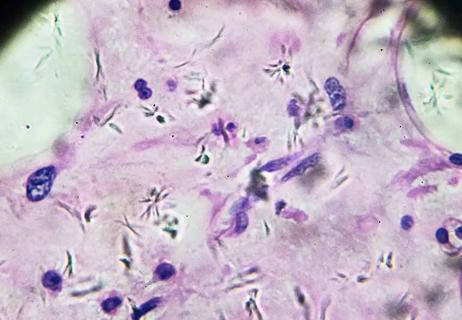Advertisement
How to create your own organizational system

If you or a loved one is dealing with cancer, you know all-too-well the ups and downs that come with battling this disease. Not to mention — there’s a ton of treatment information to gather and track. It’s easy to become overwhelmed. How can you figure out what information you really need and what questions to ask — and how do you organize it all?
Advertisement
Cleveland Clinic is a non-profit academic medical center. Advertising on our site helps support our mission. We do not endorse non-Cleveland Clinic products or services. Policy
Here’s a step-by-step plan to help you create a system for keeping your cancer information organized. Once you have your system in place, it’s amazing how much it helps dampen stress. “When patients and their loved ones have appointments, treatment information, personal information and doctor information readily available, it eliminates a major stress factor and allows the patient to focus on healing,” says Josette Snyder, RN, MSN, AOCN.
Will you take notes on paper? On a phone or on a tablet? Both?
Some people understand and retain information better when they are handwriting notes on paper and keeping them in notebooks and folders. Others might prefer technology because the information is harder to misplace. Smartphones and tablets have made it easier to keep track of appointments with calendar alerts.
“Many patients are still apt to use a mix of both electronic and paper,” says Snyder. “They want to cover all their bases and make sure no important information slips between the cracks.”
However you choose to record information will probably impact how you put the rest of your organizational system together.
Of all the information you’ve gathered so far, decide what you need to have most readily available (information you might need to take to your appointments), like:
Advertisement
On the other hand, ask yourself what information can you set aside as long as you can locate it easily if you need it?
To help with Step 2, break down the information into categories, and then decide how to handle each category.
Cancer treatment categories can include:
Below, find suggested lists of information that can fit into your cancer treatment categories and keep you organized:
Personal health information:
Schedules and contact information:
Insurance and billing information:
Legal documents:
You can also create a category for articles and research. This would include educational information about your diagnosis and treatment that you would like to keep.
Now that you can visualize the categories of information you will accumulate, you can start to develop an organizational scheme that fits your style.
You might separate binders per category and/or scan all documents and store them in a cloud-based storage application so you have them readily available anywhere at any time.
With all of the organizational tools (physical and digital) that are out there, it’s important to take some time to sort your cancer treatment information to avoid headaches and stress trying to find papers, notes, etc. “Taking this step will allow you to focus your energy on feeling better and beating cancer,” says Snyder.
Advertisement
Learn more about our editorial process.
Advertisement

Rates of early-onset breast, colorectal and GI cancers are increasing, but preventive care and a healthy lifestyle can help reduce your risk

The side effects of cancer and treatment can impact desire, sexual function and intimacy, but there are ways you can keep the flame going

Decisions you make regarding smoking, alcohol use, meal choices and exercise can make a big difference

When you’re living with cancer, eating enough protein and a variety of colorful foods can help you keep up your strength and energy

Practice meditation together, make a unique-to-them care package and embrace emotions

Taming fear and reclaiming your future after treatment

Carcinomas are the most common and affect skin and organs

Cancer is deadlier in racial and ethnic minority groups and for people in low-income areas

If you’re feeling short of breath, sleep can be tough — propping yourself up or sleeping on your side may help

If you fear the unknown or find yourself needing reassurance often, you may identify with this attachment style

If you’re looking to boost your gut health, it’s better to get fiber from whole foods